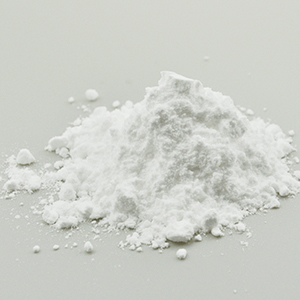Appearance: white powder, needle-like crystals
Water solubility: easily soluble in hot water, ethanol, slightly soluble in cold water
CAS registration number: 497-76-7
EINECS login: 207-850-3
Arbutin, also known as arbutin, refers to the white needle-shaped crystal or powder extracted from the leaves of bearberry. Arbutin can prevent the production of melanin by inhibiting the activity of tyrosinase in the body, thereby reducing skin pigmentation and removing pigmentation. Pigments and freckles, but also has bactericidal and anti-inflammatory effects
Arbutin can be divided into α-type, β-type, and deoxyarbutin according to different structures. The first two types are mostly used on the market. The chemical name of α-arbutin is 4-hydroxyphenyl-α-D-glucopyranoside, and the chemical name of β-arbutin is 4-hydroxyphenyl-β-D-glucopyranoside.
The role of arbutin
Whitening and lightening effects: Arbutin can compete and reversibly inhibit tyrosinase, thereby inhibiting the production of melanin and achieving the effects of whitening, removing freckles and brightening the skin.
Anti-inflammatory effect: In vitro tests, arbutin was found to inhibit the degradation of proteins such as insulin, promote the growth of skin cells, and help wound healing. When arbutin exists in trace amounts, the growth rate of cells can be significantly increased.
Antioxidant effect: Arbutin has special effects in skin care. It can repair damaged cells while maintaining their activity, and has a certain antioxidant and skin revitalizing effect.
Arbutin application products
① Reduce deposition and whiten spots.
When skin melanocytes are stimulated by external ultraviolet rays, they produce tyrosinase, which combines with tyrosine in the body to form dopa, and finally forms melanin through oxidation-reduction, decomposition, decarboxylation and other reactions. When there is too much melanin and cannot be metabolized by the body, it will precipitate in the epidermis and form spots.
Arbutin can quickly penetrate into the skin, effectively inhibiting the activity of tyrosinase in the skin without affecting the concentration of cell proliferation, blocking the formation of melanin from the root, and accelerating melanin by directly combining with tyrosinase. Decompose and excrete to reduce skin pigmentation and remove spots and freckles.
②Soothing and repairing, helping healing
In vitro experiments have confirmed that arbutin can inhibit the degradation of proteins, such as insulin, and can reduce and alleviate the irritation of surfactants and hair dyes on the skin and hair. It can also promote the growth of skin cells and help heal wounds.
In vitro culture experiments of human skin cells show that when arbutin exists in trace amounts (10-3mmol/L), the growth rate of cells is significantly improved, and it has certain skin care functions.
③Antioxidants, preventing aging
Arbutin has a good effect in conditioning the skin. It can repair damage while maintaining cell activity. In addition, arbutin can protect cells and resist the oxidative damage caused by hydrogen peroxide to cells, so it has a certain antioxidant and rejuvenating effect.
④ Anti-inflammatory and antibacterial, relieve pain
Because arbutin also has analgesic and anti-inflammatory effects, it is also used in medicines. Some burn creams contain arbutin, not only because arbutin can fade scars, but also because arbutin has certain It has antibacterial and anti-inflammatory effects to a certain extent. This allows the burned skin tissue to quickly reduce inflammation and heal, and the pain can also be relieved to a certain extent.
Mobile Phone: 86 18691558819
Irene@xahealthway.com
www.xahealthway.com
Wechat: 18691558819
WhatsApp: 86 18691558819
Post time: Apr-19-2024








